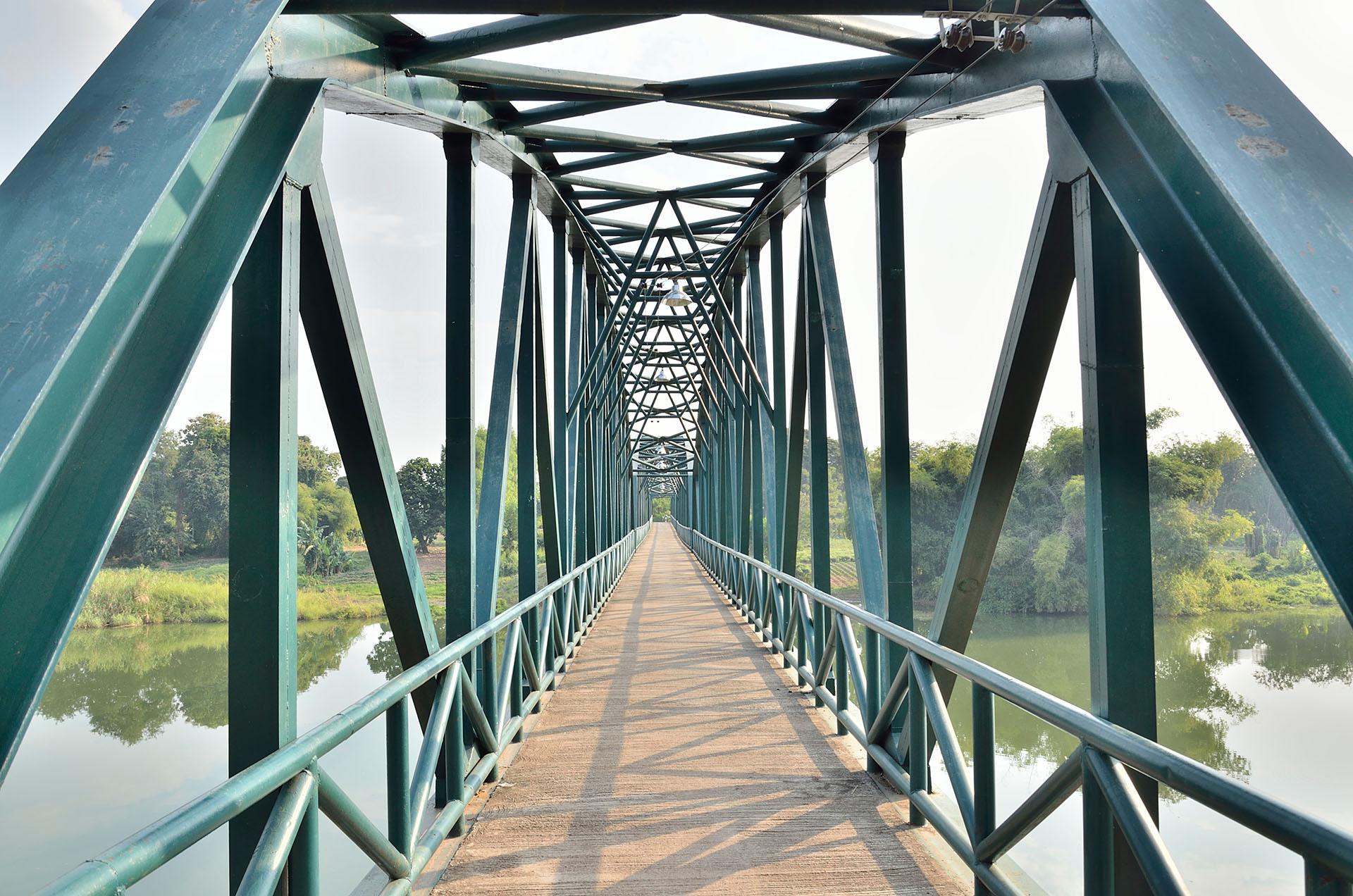The truss, an architectural and engineering concept that grew popular in the early 1800s, revolutionized the way bridges were built. Today trusses are used in not only bridges, but homes, commercial buildings, cranes, and towers. The truss has helped create modern society.
Strength at the core
- Today trusses support not only bridges, but roofs, towers, and skyscrapers, and are a vital tool for engineers and architects
- The truss – a series of triangle-shaped structures usually made of wood or steel and linked together – efficiently distributes and carries enormous loads
- Examples of truss construction date back to ancient times, but the concept came into its own in the early 1800s as a simple, efficient method to bridge waterways and canyons, allowing trains and wagons to push west across the Americas
Have a seat and take a load off. We’re going to tell you about an idea that carries a lot of weight. Literally, as it turns out.
We’re talking about the truss, the simple, and yet marvelous architectural and engineering concept that supports structures like roofs, bridges, and in some cases even entire buildings. The truss has helped build modern society.
What is a truss? Nothing more or less than a series of triangles made (usually, but not always) from wood or steel. When those triangles are linked together in a particular way, they’re able to distribute enormous loads over length and provide structural rigidity.
It’s believed wooden trusses were used as far back as the Bronze Age, at around 2,500 BC. Trusses appear in ancient Greek structures and then in Europe during the Middle Ages.
Bridge builder
But it was in the early 1800s, particularly with the development of the steam locomotive, that the truss came into its own and began to play a vital role in North American construction and architecture.
Building on advancements in mathematics that took place through the 1700s, an American architect and civil engineer named Ithiel Town in 1820 patented a lattice truss bridge design made from wood. Its advantage was it could be built relatively quickly and cheaply; wood was plentiful. The design was relatively straightforward, meaning workers could be quickly taught the process.

The design didn’t require heavy, labor-intensive stone piers used to span many waterways in Europe.
As settlement of the Americas pushed westward, bridges were needed for wagons and trains, and were across vast stretches of countryside. With wood in plentiful supply, covered truss bridges began to appear (the covers protected the trusses from weather, ensuring they would last longer). And as train networks expanded, truss bridges were built to span waterways and deep canyons, allowing the speedy movement of people and goods.
Steel, with its greater strength and longevity, eventually supplanted wood as the material of choice, and simultaneously, other truss systems emerged, such as the Pratt and the Warren, each suited to a particular task.
Versatility and strength
Today, there are scores of truss designs, and structures made from trusses include not only roofs and bridges, but communication towers, cranes, aircraft parts, and entire buildings. The iconic San Francisco Bridge is made, in part, with cantilever trusses. The longest all-truss bridge in the world? The Ikitsuki Bridge in Japan, which stretches 400 meters.
The truss works by distributing a load and managing the forces of compression and tension. The main advantages of a truss? It can handle enormous loads, it’s ridged, and can be used to span long lengths. A truss is versatile, meaning it can be adapted to structures other than just bridges, and a truss design can accommodate precarious spaces, such as a deep ravine.
The truss has proven its worth over and over again, standing the test of time and providing architects and engineers with a dependable, versatile, functional solution. It’s an idea that carries a lot of weight.
Trusscore.
The name isn’t an accident. The name Trusscore reflects the fact that the “truss” – an architectural and engineering structure that delivers enormous strength – is at the core of every Trusscore product.
“The truss is precisely why Trusscore products are ridged and strong,” says chief manufacturing officer Steve Bosman.
“The truss is at the heart of the entire company.”
The advantage of the truss is that it endows a product like Trusscore Wall&CeilingBoard with strength but without the weight of a conventional sheet of drywall. The internal core of a sheet of Wall&CeilingBoard is largely hollow, And in that hollow space you’ll find the trusses that give the product its ridged structure.
Truss. Trusscore. Strength at the core of our products. Strength at the core of the company.





